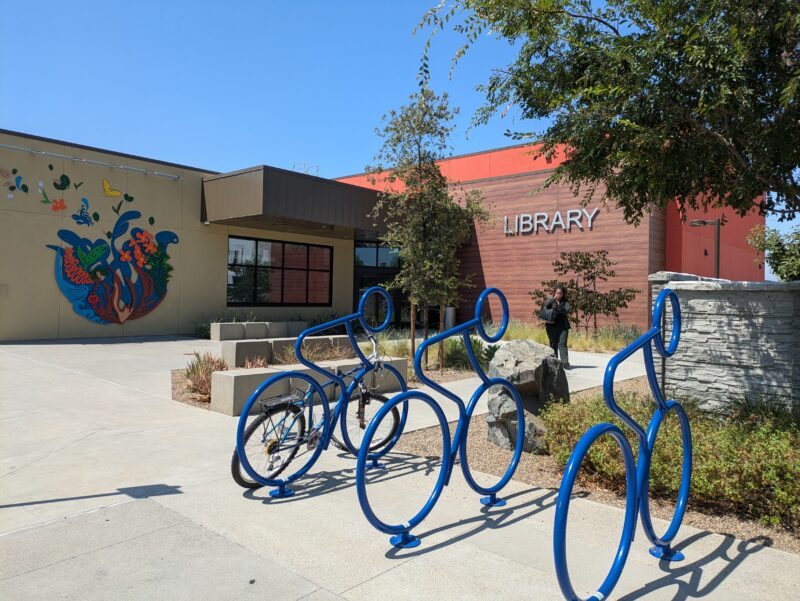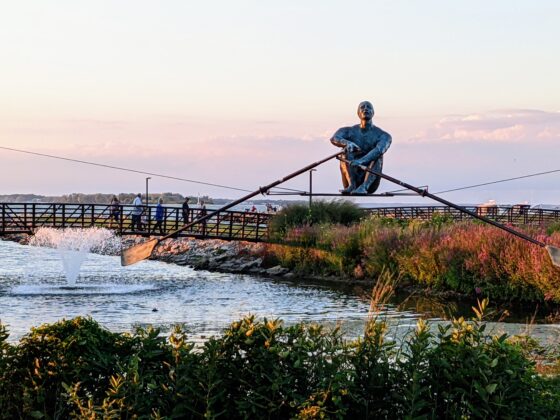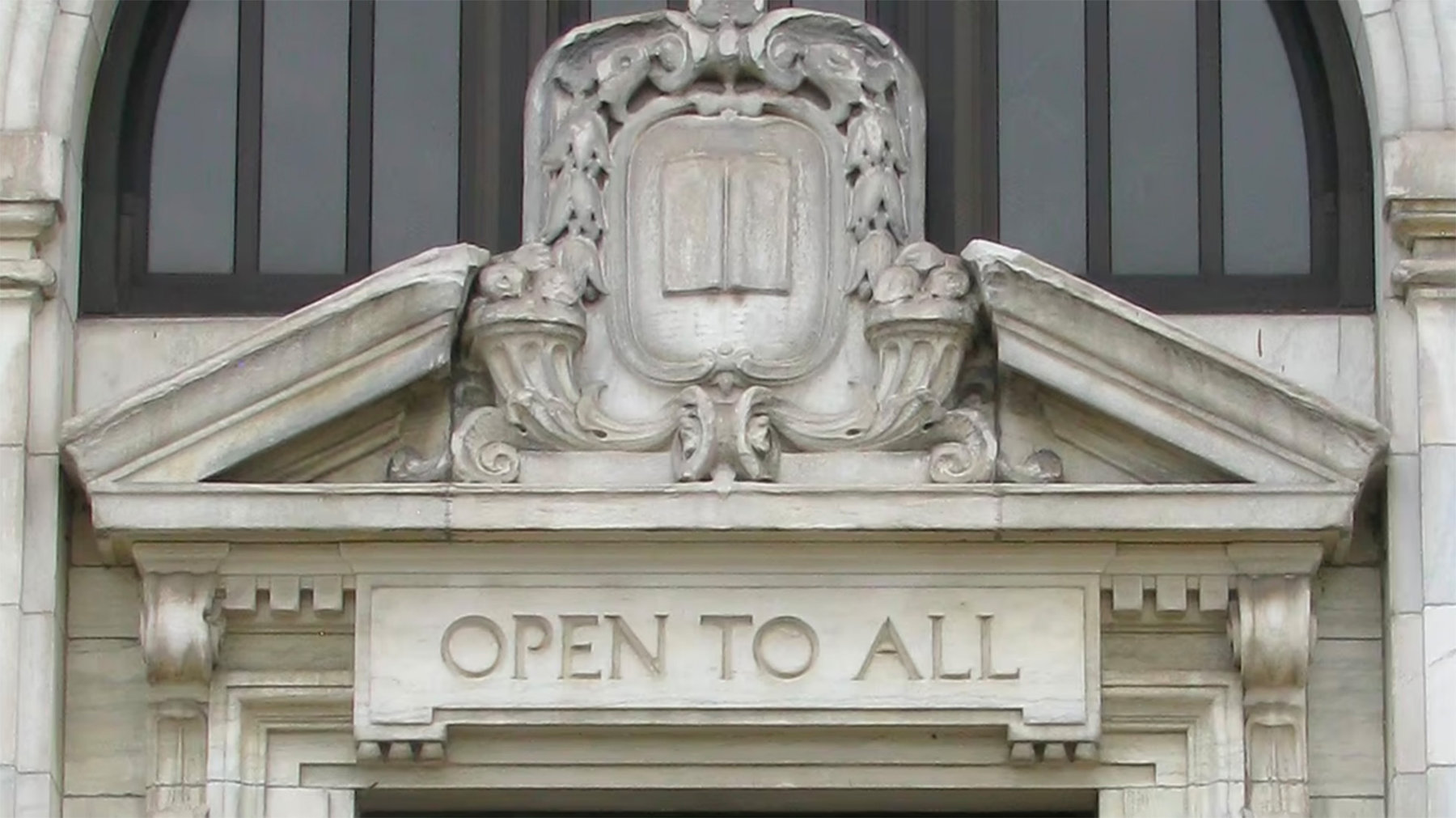Libraries are having their day. They’re no longer the “best kept secret in town”. They’re no longer whisper-quiet. They’re still about books, but also about so much more. Libraries have come full-circle in a way, with today’s maker spaces harkening back to Ben Franklin’s experiments with electricity at the Philadelphia Library Company. And the community-center features of today’s libraries date back to one of Andrew Carnegie’s early libraries in Pennsylvania, which had a swimming pool and a music hall.
What are libraries doing today, with their new identity? They are creating programs that touch some of the most fundamental issues of our time: improving school-readiness for their youngest patrons, and basic literacy for the oldest; helping new immigrants become settled, with English and citizenship classes; providing safe day-shelter and pathways ahead for the homeless and recently incarcerated; helping job-seekers; offering counseling on issues of health, law, social services; introducing basic technology skills and access to devices and the internet; hosting community conversations about racial issues, immigration, book bans, sometimes even politics.
Libraries have established themselves as “second responders” to natural and man-made disasters like hurricanes, floods, or riots, which they answer with emergency shelter, electric power, information, and sympathy. When the pandemic shut down normal life, libraries threw out their own rule books and started over, collaborating with overwhelmed local governments, schools, and health services, shifting their own programs online and moving services out of doors, and opening their phones to anyone who needed to hear a human voice.
Now, libraries are moving beyond being responders and into a fast lane as initiators around arguably the biggest issue on the planet—our sustainability.
What does ‘sustainability’ mean, anyway?
The meanings of words shift around as needed. New words are invented (rizz, hellscape) or borrowed from other languages (pasta, karaoke), old words take on new meanings (cool, awesome) or shrink or inflate meanings colloquially (quality, literally), words are avoided or abandoned and replaced (slave —> enslaved person).
Sustain used to be simpler word, meaning to endure or to last. Sustainability, in its noun form, is a word on the move. It means different things to different people. Its meaning has swelled. It has taken on political tones, become a buzzword and even a metaphor.
In the library world, the mighty American Library Association (ALA) has been on the trail of sustainability for more than eight years. In January of this year, the ALA officially reaffirmed Sustainability as a core value, and defined it this way: making choices that are good for the environment, make sense economically, and treat everyone equitably.
The New York Library Association has been addressing sustainability since 2014. They originally hosted the now well-established Sustainable Libraries Initiative (SLI), which outlines a certification process to becoming a sustainable library with practical steps and a process. They encourage, guide, and mentor their members to take deliberate action toward sustainability.
Creating a sustainable library.
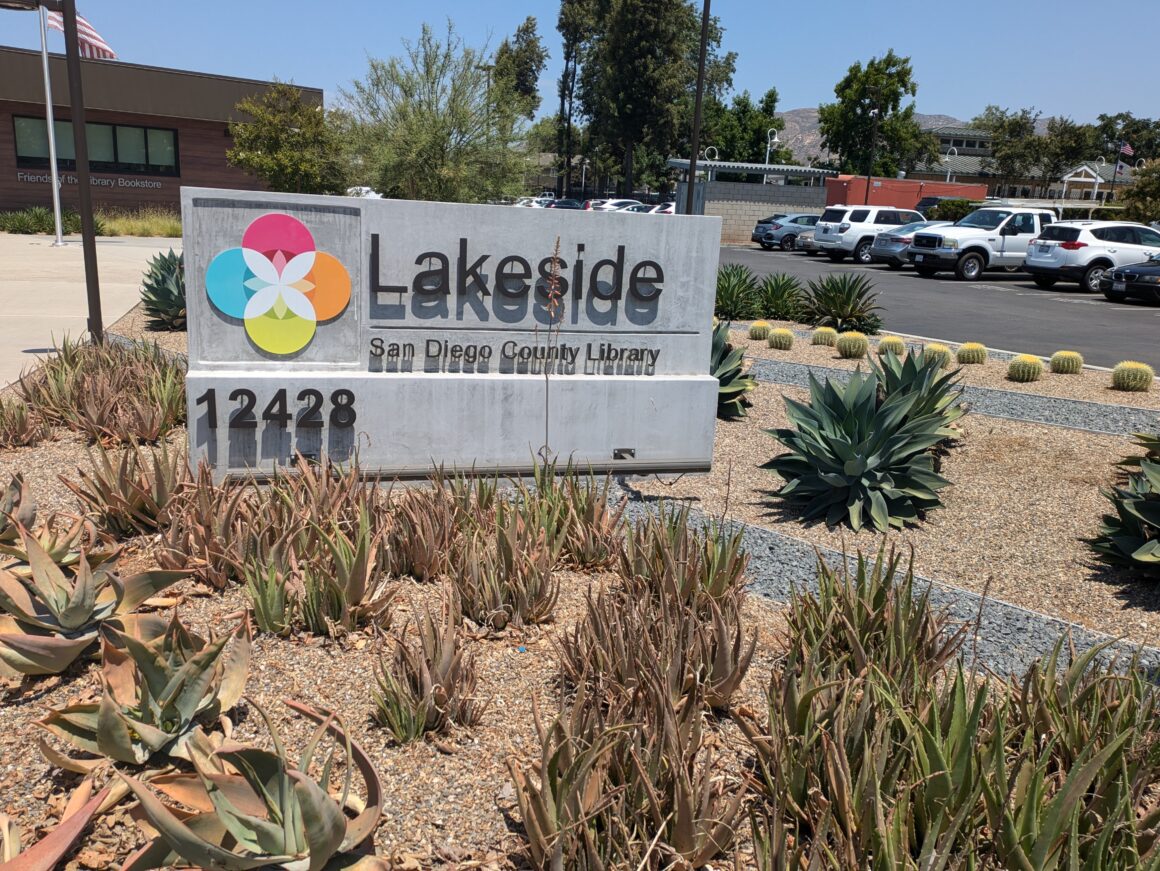
Migell Acosta arrived as director of the San Diego County Library (SDCL) system eight years ago, an appropriate match with a broader sea change across the entire library industry, about making these venerable institutions more accessible and relevant to their communities. The deputy director of SDCL, Susan Moore, told me recently that when Acosta arrived, he came “with vision to establish the libraries as a stronger and more visible leader.”He wanted to up its ante as a solid supporter of the county and the Board of Supervisors, who govern the library system, and as a good collaborator with the many county agencies.
A number of years after Acosta’s arrival, things began to take shape for a sustainability move by the SDCL. San Diego County’s officials offered a natural and receptive environment, in both mission and administration. The county and state governments had already declared a broad-sweeping commitment to sustainability in all senses. The SLI platform and process, originally started along the east coast, was opening up nationwide, offering San Diego libraries a chance to become the first certified sustainable library system on the west coast. This added up to a big opportunity for SDCL, to signal itself as a leader and as a model for others.
The workload ahead was daunting. Certification required fulfilling some 150 tasks across about a dozen categories. They covered life both inside the libraries and outside in the communities they serve: in finance, collections, buildings, HR, programs, civic engagement, and more. Moore described how they formed a team and partnered with many of the agencies across the county as collaborators and subject experts from facilities to public works and general services, you name it. They set up a digital managing system to track it all. “There was a mountain of stuff to do, and teamwork made all the difference,” said Susan Moore.
From the Sustainable Libraries Initiative’s perspective, this was also an opportunity. Matt Bollerman, the CEO of the Hauppauge Public Library on New York’s Long Island, a co-founder of SLI, and the mentor who would guide San Diego through the process, described to me how SLI had been set up with much smaller libraries in mind, and the scale of this huge library system would be trailblazing and a stress test. In area, San Diego County is nearly the size of Connecticut and is highly varied—urban, suburban, coastal, rural, mountains, desert. The 33 county libraries employ some 300 people, and serve over three million. The demographics of the communities are all over the map, literally and metaphorically, in ethnicity, income, education, life expectancy, and many other measurable data points.
The SDCL recognized their very big advantage and head start, being overseen by a progressive county and state government. California has a lot of environmentally-friendly laws, explained Moore, and “the first revelation was … that many sustainability efforts were already taking place.”
There were construction guidelines around zero net energy use and LEED gold standards in place for all new county facilities, which included libraries. “We’re the beneficiaries of that,” said Acosta, and emphasized, “we’re super privileged to be in a supportive environment.”
Starting with a simple-sounding task: eliminating single-use plastic.
But there was plenty left to do. Susan Moore described what it took to accomplish one simple-sounding task: eliminating single-use plastic in the libraries. Current systems would be upended. These included the purchasing of bulk quantities of plastic bottles and the logistics of distributing them to rural libraries or for events. As they explored alternatives, like aluminum cans, the library team found existing glitches in current systems.
We all wonder what happens to the newspapers, bottles, and cans that we toss into various recycling bins on the streets and airports, in planes and hotels, and at the curbs in front of our houses or apartment buildings. What happens along the way to their invisible destinations? In the SDCL, they discovered that much of the recycled content ended up co-mingled with trash.
Other alternatives posed their own challenges. In the post-covid world, librarians and staff reported that people were often skittish about the existing water fountains. A few water bottle filling stations were already in place, and they were popular. SDCL decided to go with that model. People could bring their own containers, and the county could switch to compostable cups. It worked. The decision to change and the final result, Moore said, was “a good example of a little thing being a big change.”
The next step: engaging the community.
The library buildings and grounds and internal operations are half the mission. The other half is reaching the community. What does Sustainability mean for civic engagement, for example?
At this level, sustainability runs the gamut from improving quality of life to simply keeping human life going. This goes straight to the heart of how Matt Bollerman of SLI sees the mission of public libraries: To “act as a participant in making whatever earth you are serving a better place for the humans on that earth, for the animals, for the land, the sky, the water, really, the library has a role to help make all of it better.”
Several librarians around the country have told me stories of how their elderly customers (“customers” is a library-industry term of art) crave libraries as their point of human contact. Many librarians link this directly to what US Surgeon General Vivek Murthy has identified an epidemic of loneliness and isolation, and how community organizations can be a lifeline for making connections.
Mary Elder, the branch manager at San Diego County’s Lakeside library, who listens closely to her elderly customers, told me: “They’re here to get a book, here to get movies, they’re here to do things like that. But what they really need is that human interaction. They want to talk to you about what they heard about their granddaughter the other day, or the kind thing their neighbor did for them… We often get the feeling that we’re the one relationship that they can count on… it’s kind of their joyful moment, to be at the library.”
Libraries around the country offer programs supporting life’s toughest circumstances. An example in San Diego is its Homeless Court, for those trying to navigate their way out of minor trouble with the legal system, or to host talks about human trafficking or bullying awareness. Libraries support positive civic efforts, like voter registration and education on tips for keeping cool and hydrated, or warm and dry in extreme weather conditions.
Other projects, like the nationally popular “seed libraries”, where people borrow seeds and return new ones after the season, are “a way for the community to connect with sustainability on a granular level,” says Moore. SDCL draws on its colleagues across departments and the county to offer presentations to the community and staff on timely topics. Architects talk about the sustainable features at the brand new Borrego Springs library in the desert. Experts talk about recycling and run composting workshops. They discuss energy saving habits and talk about emergency equipment, like power generators.
Generators in libraries can be more than a piece of equipment. They belong in the ecosystem of sustainability, where “resilience” is an extension of the definition of sustainability, and generators are the practice of resilience. For example, during dramatic weather occasions where electricity is lost, libraries become zones of resilience, providing power to the community.
Bollerman says that when libraries begin formally engaging with the SLI program, they often realize something that Susan Moore quickly identified: many of their current practices are already sustainable, like using solar panels or LED lighting. These accomplishments “count” in SLI’s certification process, and Bollerman says that going through the exercise “is documenting what you do, and realizing that this all adds up, that you’re pulling in a certain direction that you didn’t realize.” It helps give libraries “a context and a structure” to deliver the story of sustainability more meaningfully to the community.
A visit to a sustainable library.
The Lakeside public library, about 20 miles northeast of the city of San Diego, opened as a zero net energy facility about a year ago. It is one of 11 new libraries the county has opened in the past 11 years. Despite the ample parking lot– hey, every place in California needs parking–you are greeted with “sustainability” in its wholistic sense: Bike racks in the shape of bikes, EV charging stations, local artists’ nature murals at the entrance, rooftop solar panels, native plants landscaping the building.
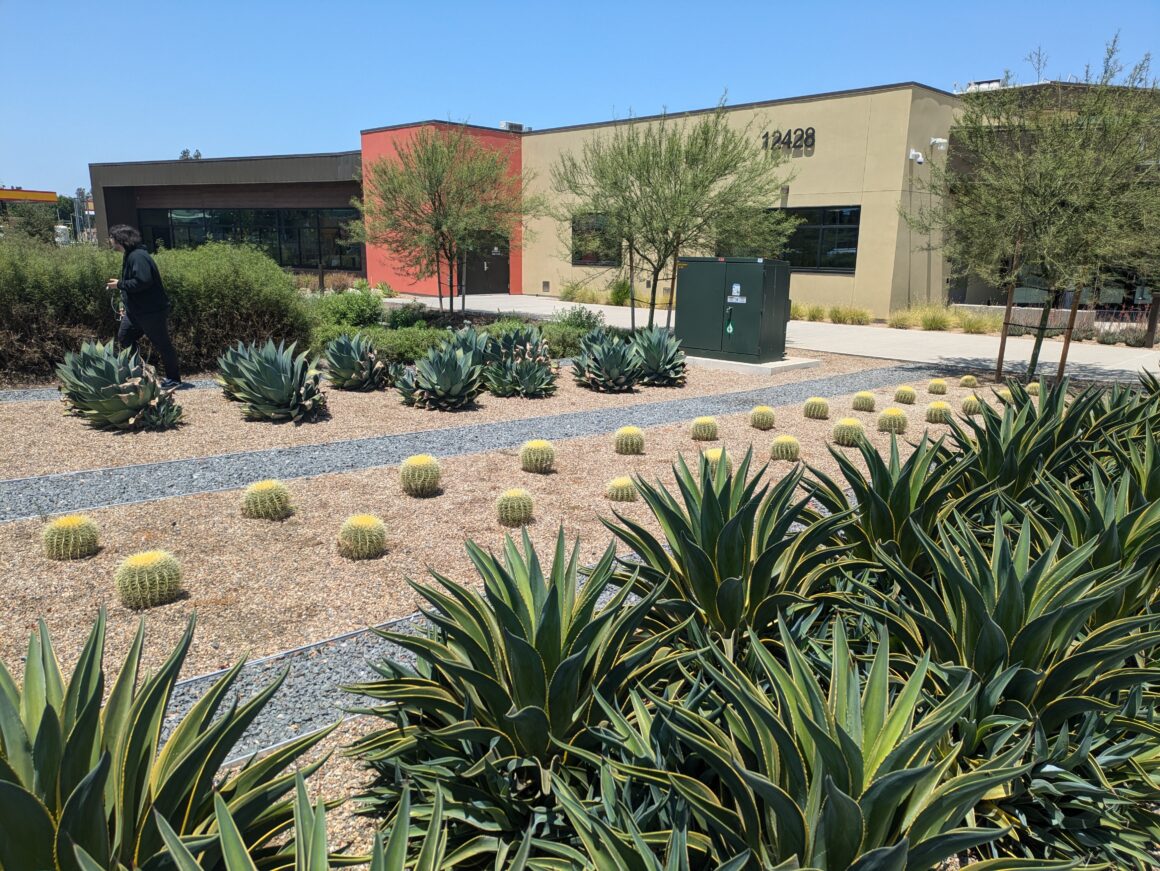
As a modern library, Lakeside also functions as a community center, a role and identity that libraries have become comfortable with and are actively embracing. There are spacious gathering rooms for local groups—from home schoolers to the Chamber of Commerce, from crochet clubs to speech contests. A transition to the children’s area is signaled by a blue carpet change that evokes water, plus kid-height murals of animals on the walls and high murals like clouds hanging in the sky. Grand views of the outside vegetation and a swale provide teaching-moments about earth and water for the kids. The style of the teen area was informed by input from actual teen-agers – the themes they wanted, the colors they liked — earning buy-in from that cohort. There are quiet study rooms.
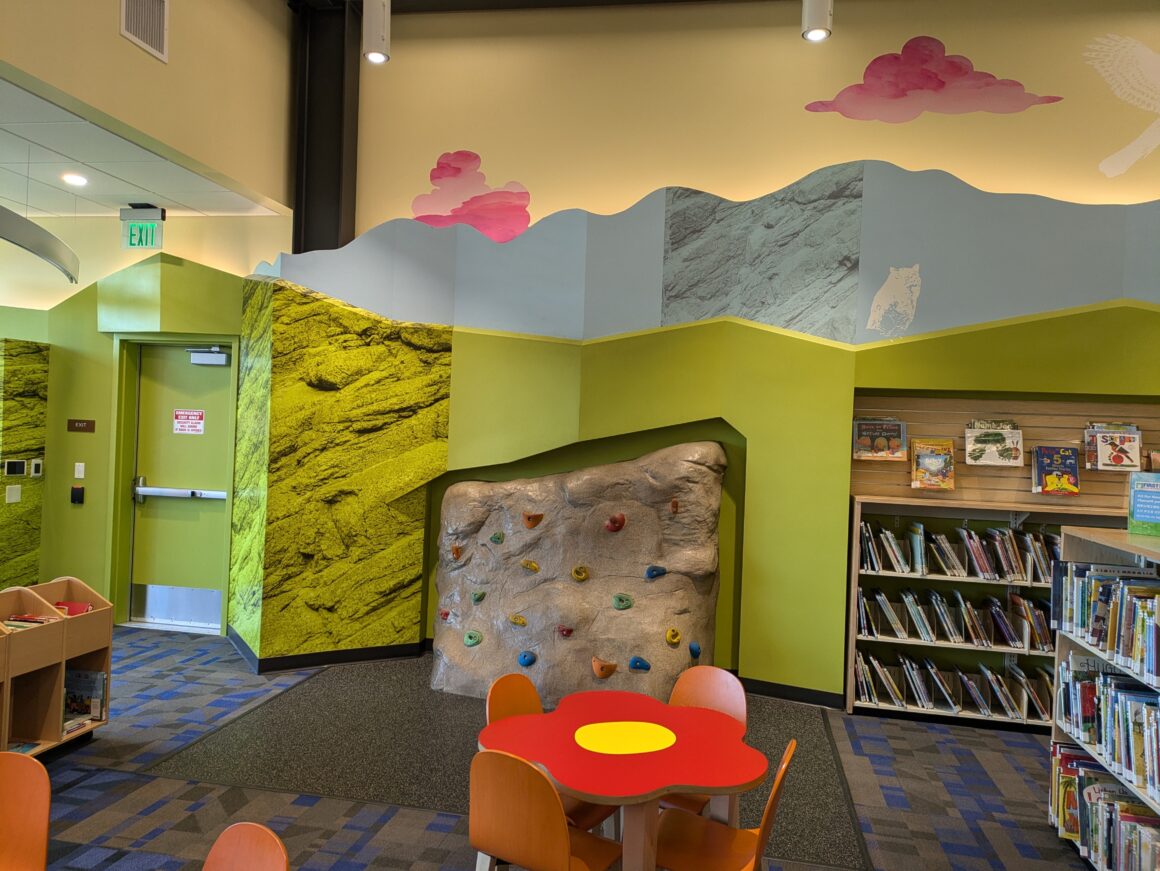
Dominique Freeman, chief of Capital Projects and Facilities for San Diego County and a trained architect, told me that she acts as a kind of translator between community members, with their input, and the building designers who bring it all to life. She walked me through some of the features to notice, like the adaptable use of space to suit the changing needs of their customers. The Poet’s Patio, for example, “is a flexible outdoor space that takes advantage of our mild climate,” she said. The small tables and chairs work well for socializing or working, and can easily be moved to make way for a larger public space for programs. Inside, the mobile book displays and furniture offer similar flexibility.
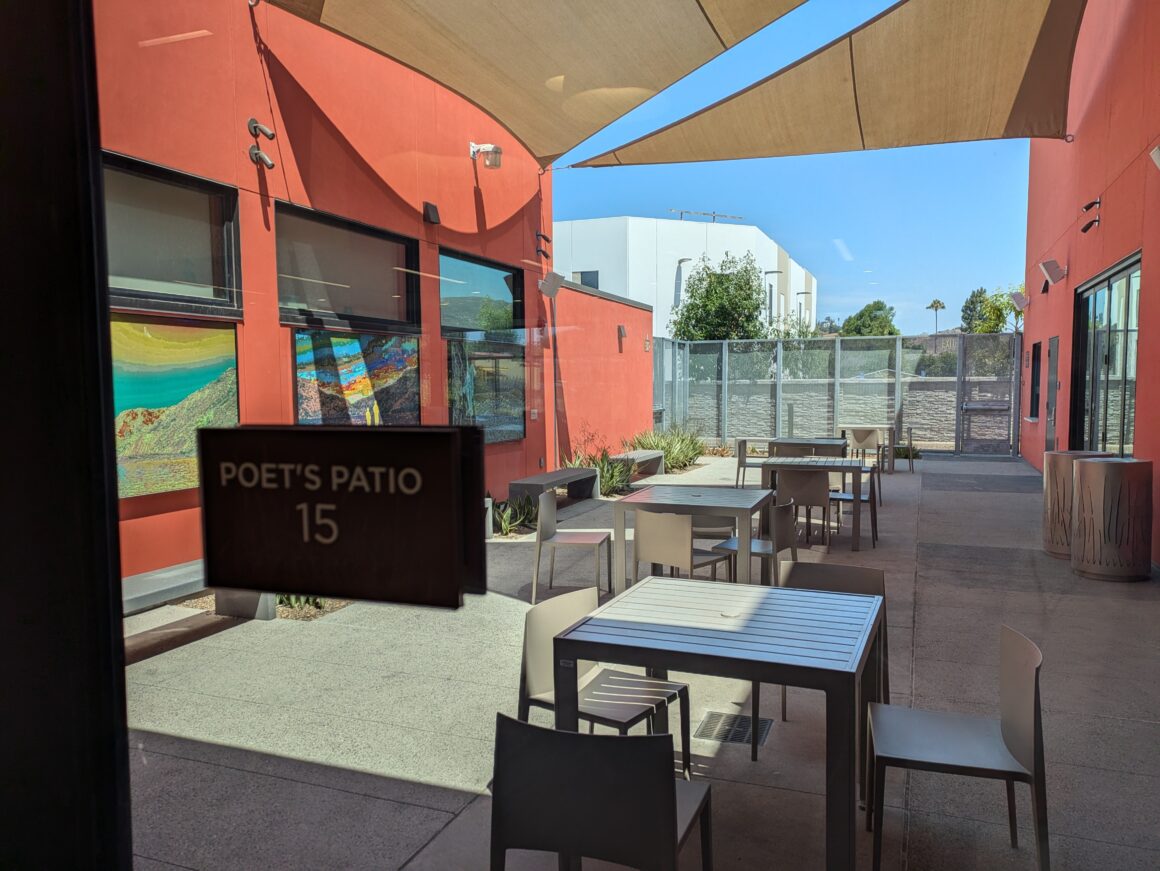
Lakeside has designated indoor “cool zones” during the hot summer months, which provide a way for the most vulnerable to escape the dangerous heat. There are cost-and-energy-saving automatic systems for detecting human movement, which control lighting and cooling.
Walking thru the library is a lot of fun. You absorb the message of sustainability sometimes subtly, sometimes not so subtly. I followed the signage like waypoints through the open-plan high-ceilinged main room, a sign about water usage; a sign about lighting, etc. Branch manager Mary Elder says that people routinely slow down at these signs as they move through the library, newly curious to read and learn about the sustainability features.
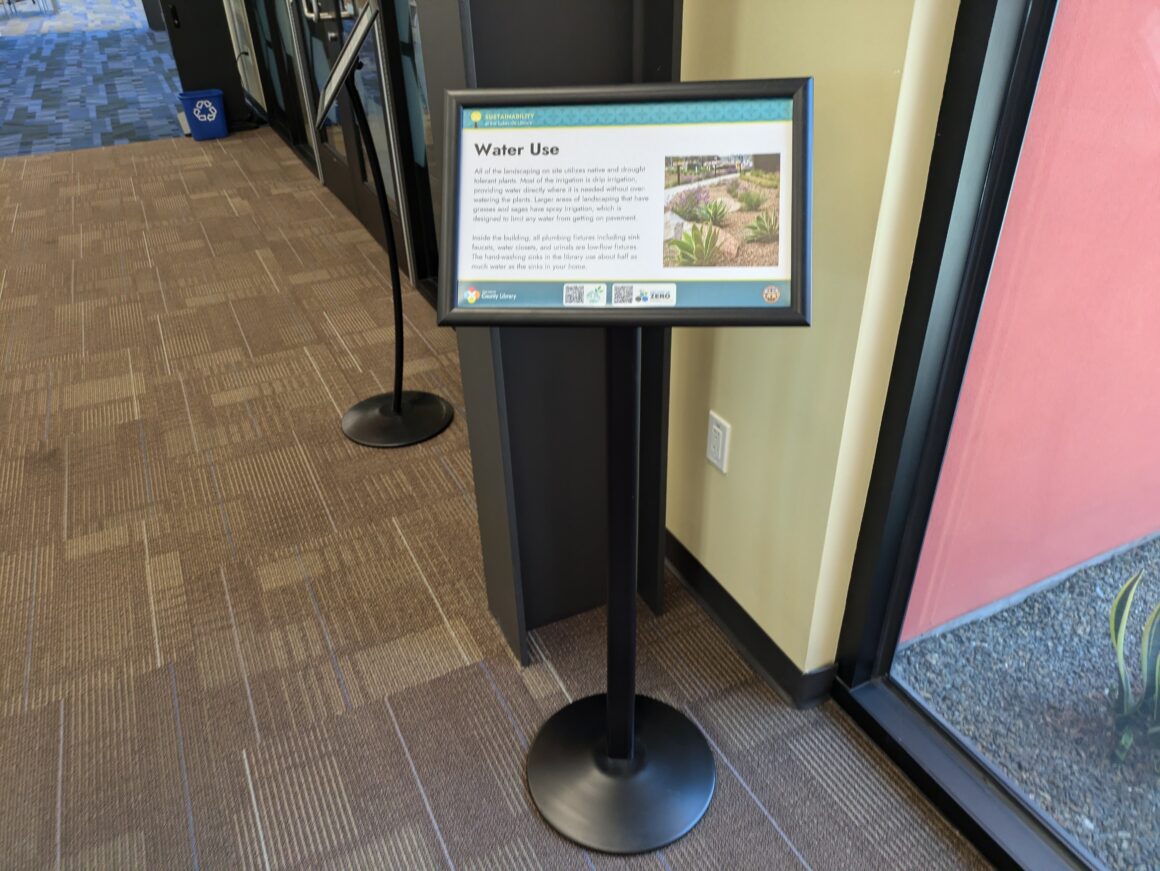
The message of sustainability is deliberately embedded in many library events and presentations. Age-appropriate programming weaves sustainability themes throughout: Talks for kids by magicians and hands-on science labs, 5-day camps for youth that introduce public health careers, talks for adults on native plants, animals, and insects, notices about joining Climate Action Day with corps of young climate action volunteers from around the state.
Sustainability, as defined by the ALA and SLI, also includes equity in food access. The monthly food pantry at Lakeside served over 127 people this past June. Mary Elder said that a surprise emerged from another program last year to feed students. “We have a lot of vulnerable community members that are adults and that are very food insecure, and so they would comment, is there anything for us?” she told me. The library is now looking at expanding the food program to adults.
Being on a wavelength with the customers is something librarians excel at. In Acosta’s world, he recognizes that many people are simply overwhelmed. He reads the room of his library base and today’s times, “We’re just living in this state of multi crisis and sometimes hitting people over the head with climate changes; it’s just too much… What can I do as an individual.. Why should I focus (on climate change) instead of on these 10 other crises that I’m going through?”
Acosta says that if you think about the library’s role, it is a place where the community can come and share their stories. As an individual, you may be making your best effort, but you think you’re the only one. “You show up to one of our events and you find other people in the community who are conserving water, doing whatever,” Acosta continues, “and all of a sudden they realize, ‘Oh, I feel much like, hey, maybe we can get together, naturally.’” The outcome? “Community strength gets reinforced,” Migell Acosta says.

